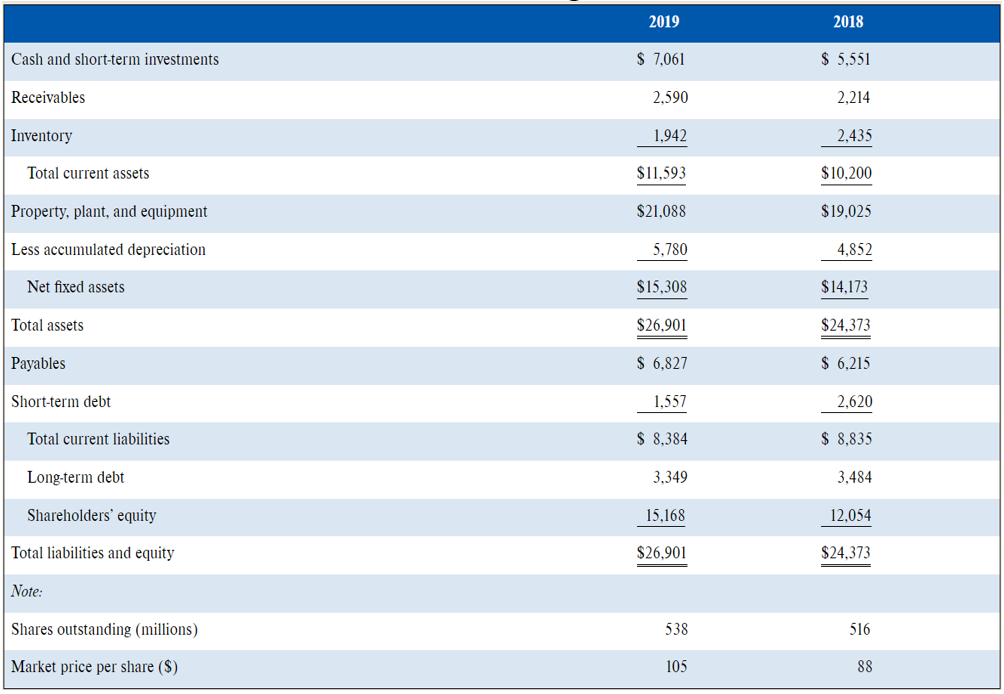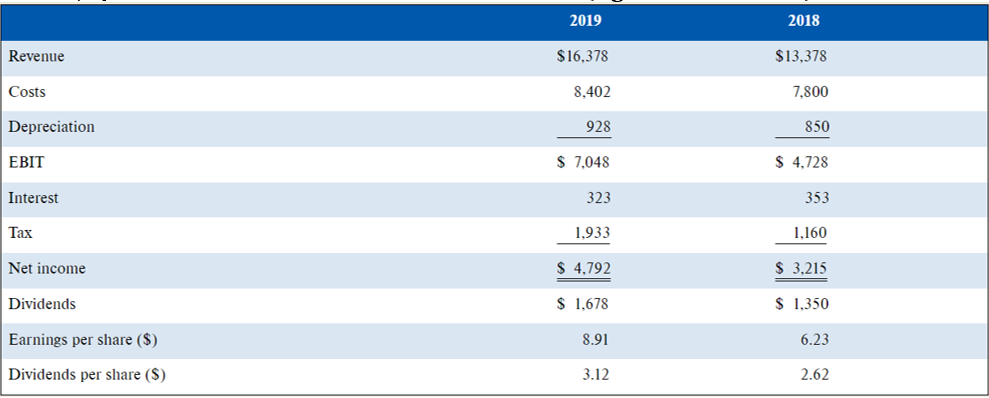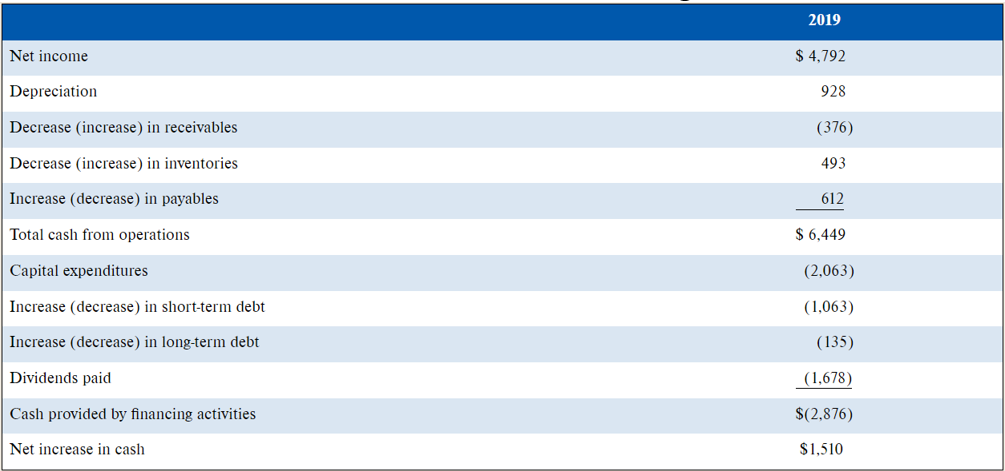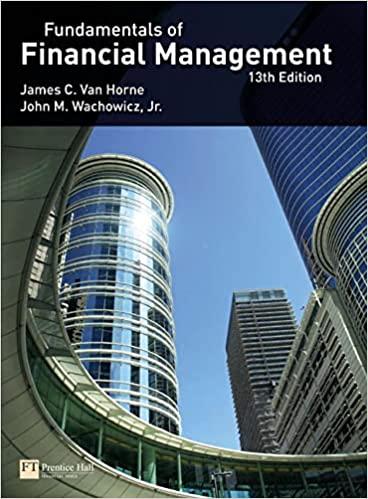Question
George Liu, the CEO of Penn Schumann, was a creature of habit. Every month, he and Jennifer Rodriguez, the companys chief financial officer, met for
George Liu, the CEO of Penn Schumann, was a creature of habit. Every month, he and Jennifer Rodriguez, the companys chief financial officer, met for lunch and an informal chat at Pierres. Nothing was ever discussed until George had finished his favorite escalope de foie gras chaude. At their last meeting in March, he had then toyed thoughtfully with his glass of Chateau Haut-Brion Blanc before suddenly asking, What do you think we should be doing about our payout policy?
Penn Schumann was a large and successful pharmaceutical company. It had an enviable list of highly profitable drugs, many of which had 5 or more further years of patent protection. Earnings in the latest 4 years had increased rapidly, but it was difficult to see that such rates of growth could continue. The company had traditionally paid out about 40% of earnings as dividends, though the figure in 2019 was only 35%. Penn was spending more than $4 billion a year on R&D, but the strong operating cash flow and conservative dividend policy had resulted in a buildup of cash. Penns recent income statements, balance sheets, and cash-flow statements are summarized in Tables 17.3, 17.4 and 17.5.
Table 17.3 Penn Schumann Inc. balance sheet (figures in millions of dollars

Table 17.4 Penn Schumann Inc. income statement (figures in millions)
 Table 17.5 Penn Schumann Inc. statement of cash flows (figures in millions)
Table 17.5 Penn Schumann Inc. statement of cash flows (figures in millions)

The problem, as Mr. Liu explained, was that Penns dividend policy was more conservative than that of its main competitors. Share prices depend on dividends, he said. If we raise our dividend, well raise our share price, and thats the name of the game. Ms. Rodriguez suggested that the real issue was how much cash the company wanted to hold. The current cash holding was more than adequate for the companys immediate needs. On the other hand, the research staff had been analyzing a number of new compounds with promising applications in the treatment of liver diseases. If this research were to lead to a marketable product, Penn would need to make a large investment. In addition, the company might require cash for possible acquisitions in the biotech field. What worries me, Ms. Rodriguez said, is that investors dont give us credit for this and think that we are going to fritter away the cash on negative-NPV investments or easy living. I dont think we should commit to paying out high dividends, but perhaps we could use some of our cash to repurchase stock.
I dont know where anyone gets the idea that we fritter away cash on easy living, replied Mr. Liu, as he took another sip of wine, but I like the idea of buying back our stock. We can tell shareholders that we are so confident about the future that we believe buying our own stock is the best investment we can make. He scribbled briefly on his napkin. Suppose we bought back 50 million shares at $105. That would reduce the shares outstanding to 488 million. Net income last year was nearly $4.8 billion, so earnings per share would increase to $9.84. If the price-earnings multiple stays at 11.8, the stock price should rise to $116. Thats an increase of over 10%. A smile came over Mr. Lius face. Wonderful, he exclaimed, here comes my homard la nage. Lets come back to this idea over dessert.
Evaluate the arguments of Jennifer Rodriguez and George Liu. Do you think the company is holding too much cash? If you do, how do you think it could be best paid out?
2019 2018 Cash and short-term investments $ 7,061 $ 5,551 Receivables 2,590 2,214 Inventory 1,942 2,435 Total current assets $11,593 $10,200 Property, plant, and equipment $21,088 $19,025 Less accumulated depreciation 5,780 4,852 Net fixed assets $15,308 $14,173 Total assets $26.901 $24,373 Payables $ 6,827 $ 6,215 Short-term debt 1,557 2,620 Total current liabilities $ 8,384 $ 8,835 Long-term debt 3,349 3,484 Shareholders' equity 15,168 12,054 Total liabilities and equity $26,901 $24,373 Note: Shares outstanding (millions) 538 516 Market price per share ($) 105 88 2019 2018 Revenue $16,378 $13,378 Costs 8,402 7,800 Depreciation 928 850 EBIT $ 7,048 $ 4,728 Interest 323 353 Tax 1.933 1,160 Net income $ 4,792 $ 3,215 Dividends $ 1,678 $ 1,350 Earnings per share ($) 8.91 6.23 Dividends per share ($) 3.12 2.62 2019 Net income $ 4,792 Depreciation 928 Decrease (increase) in receivables (376) Decrease increase in inventories 493 Increase (decrease) in payables 612 Total cash from operations $ 6,449 Capital expenditures (2,063) Increase (decrease in short-term debt (1,063) Increase (decrease) in long-term debt (135) Dividends paid (1,678) Cash provided by financing activities $(2,876) Net increase in cash $1,510
Step by Step Solution
There are 3 Steps involved in it
Step: 1

Get Instant Access to Expert-Tailored Solutions
See step-by-step solutions with expert insights and AI powered tools for academic success
Step: 2

Step: 3

Ace Your Homework with AI
Get the answers you need in no time with our AI-driven, step-by-step assistance
Get Started


